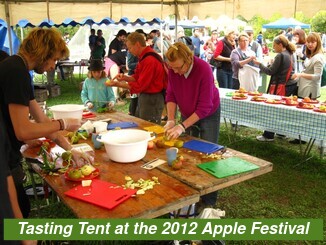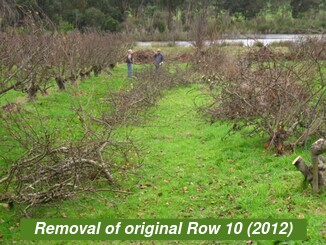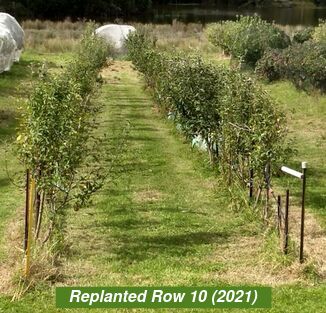-
-
-
-
-
-
-
-
-
About HFS and Petty's Orchard
-
-
-
-


About HFS and Petty's Orchard
History of the Heritage Fruits Society

HFG members decided in 2006 to set up incorporation of the group, to facilitate planning and applying for grants to expand the collection. The new group, named the Heritage Fruits Society Inc. (HFS), was officially formed in May 2008. Its fundamental goals continue to be the preserving of at-risk fruit varieties, promoting organic and permaculture growing methods, and providing volunteers with opportunities to learn, develop and share related skills and experience.

History of the Heritage Block at Petty's Orchard
Records of the Heritage Block’s original layout and purposes are surprisingly scanty. But from discussions with "old hands" and our own observations, we present its likely history here. What we now call the Heritage Block was planted out in 1984 with two sections:
- a 'Demonstration Orchard' section (originally Rows 1 to 5, counting from the end nearer to the Café), in which eleven of the most commonly-produced apple varieties of the day were grown, each on five different trellis or training systems frequently used at the time: Vase System, Central Leader, Lincoln Trellis, Tatura Trellis and EBRO Trellis. This section was probably intended for demonstration or training purposes for trainee orchard operators to learn the peculiarities of pruning these varieties on each of those systems, and thus to be prepared for work in full-scale fruit orchards. The rootstock used for these was probably a non-dwarfing rootstock such as Northern Spy.
- an 'Antique Apple Cultivars' section, which originally comprised the remaining nine rows. The first five rows of this section were grafted on non-dwarfing rootstock (also quite possibly Northern Spy), while the remaining four rows were mainly grafted to a dwarfing rootstock (likely M26 or M27).

The original Rows 1 and 2 were also removed in 2020. The width of these rows was greater than the others in the original Heritage Block layout, which allowed this space to be replaced by five closer-spaced rows. This, and other clean-ups around the block, has given us space to plant trees of additional fruit types.

So far (as of 2024), HFS has been able to establish new collections of plum (about 90 varieties) and apricot (about 20 varieties) trees in these new areas. We have sourced scion material for these over many years, largely from collections (some now dissolved, for example the Bathurst Research Station) in Victoria and New South Wales. These have been painstakingly grafted up, nurtured for several years, and planted out into the freshly-vacated areas of the Heritage Block. Also on the cards within a few years is the development of a limited pear collection.